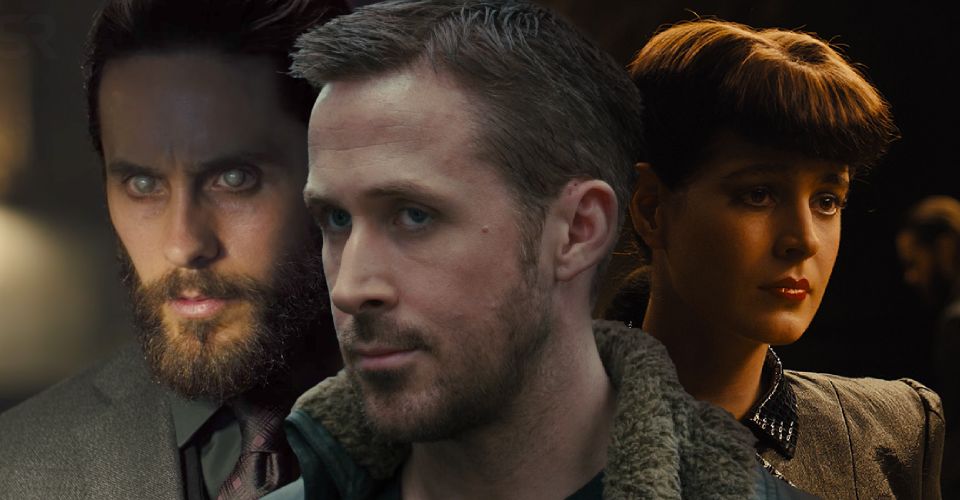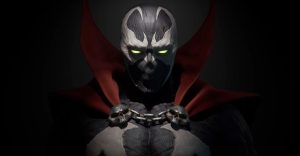Blade Runner: All 10 Replicants In The Movies (& What Happened To Them)

A total of 10 replicants appear throughout Blade Runner and Blade Runner 2049, each meeting a distinct fate and impacting the narrative in terms of their actions and what happened to them. Replicants have always been central to the Blade Runner franchise, which was adapted from Philip K. Dick’s sci-fi novel Do Androids Dream of Electric Sheep? in which, these bioengineered entities were referred to as ‘androids’ or ‘andies’. The manufacture of replicants was introduced in the year 2000 within the cyberpunk-ish world of Blade Runner, helmed by Tyrell Corporation, whose ‘Nexus’ series was virtually indistinguishable from that of adult humans.
The man-machine dilemma has been an age-old one, especially with ongoing advancements in the realm of artificial intelligence, and the probability of achieving ‘singularity’, wherein AI systems can accelerate/self-improve at alarming rates and reach levels of self-sufficiency like never before. Blade Runner examines the fabric of what it means to be human and raises salient questions about injustice, slavery, power, and xenophobia that runs rampant beneath the noir trappings of a dystopian future. In both the source material and the movies, humanity is defined as much by its lack of empathy towards replicants as by other redeeming qualities.
In Ridley Scott’s Blade Runner, the illegal landing of a group of six renegade replicants on Earth is what triggers the return of Deckard from retirement, as Captain Bryant asks him to ‘retire’ four of these replicants as his assignment. Fast-forward 30 years in Villeneuve’s Blade Runner 2049, replicants are still utilized for slave labor and hunting their own kind, now farmed synthetically and tweaked to be more subservient to human will. This only serves to heighten the fact that humans, both in Blade Runner and the real world, are ethically unprepared to deal with the repercussions of creating sentient life, despite unprecedented progress. Here is a deep-dive into all 10 replicants who appear throughout the ethically-quagmired world of the Blade Runner films, and what happened to them.
Roy Batty

Assuming leadership for the six-member replicant group, Roy Batty was a Nexus-6 combat model, numbered N6MAA10816, deployed in off-world conflict resolution since his inception. Possessing superhuman strength and abilities, Roy could withstand extreme temperatures and physical wounds, while also displaying advanced levels of self-awareness and sufficiency. After Zhora and Leon are killed, Roy, along with Pris, manipulate J.F.Sebastian in order to reach the elusive Tyrell himself. Upon meeting his maker, he demands an extended life, which, when rebuffed, leads him to crush Tyrell’s skull and gouge his eyes out. Pris’ death further fuels Roy’s anguish, which is unleashed in an unforgettable chase sequence with Deckard, in which Roy displays the ultimate act of empathy, saving Deckard from imminent death. As his four-year life span comes to an end, Roy reflects upon the nature of memories, both real and implanted – and the emotions they evoke in him, ranging from terror to awe. He also muses about the transience of existence, uttering “all those moments will be lost in time, like tears in rain.”
Zhora Salome

Zhora, known by her stage-name Miss Salome, was a Nexus-6 model, numbered N6FAB61216, and trained for “an off-world kick murder squad” along with political homicide. On reaching Earth, Zhora and the rogue replicant group are immediately hunted by the LAPD, which led the group to split and pursue their individual missions. Zhora chooses to perform at The Snake Pit as an exotic dancer, saving up enough to purchase an animoid serpent. When Deckard hunts her down under the guise of being an artist welfare representative, Zhora sees through this ruse and attempts to strangle him, post which a chase ensues. After several missed shots, Deckard’s bullet hits Zhora, making her crash through glass and die on the street. It is important to note how Zhora’s ‘retirement’ sequence is shot: in slow-motion, with the sounds of the city being drowned by an emotionally-charged score, and the juxtaposition of mannequins and Zhora’s lifeless body.
Leon Kowalski

Leon’s emotional development was lower in comparison to Roy, as he was classified as mental level C, as opposed to Roy’s A level. Despite this, Leon believed in the renegade replicant cause, being a Nexus-6 labor model numbered N6MAC41717, who faced the same discrimination and subjugation as his fellow replicants. He also was able to adapt to the philosophy of cherishing the present, as he carried the photographs of his current friends, as opposed to implanted memories of the past. Leon had spotted Deckard on the street after Zhora’s death, and tails him with the intention of killing him, but is shot instead due to Rachael’s intervention. While Leon was not as intellectually adept as the others, he demonstrated dependable loyalty and emotional attachment for those he cared about.
Pris Stratton

Pris, a Nexus-6 N6FAB21416, has been referred to as a “basic pleasure model” – however, she was not only good at combat but was also able to mimic emotional manipulation and deceit, such as when she befriended J.F.Sebastian. Roy and Pris seem to share a deep emotional connection, and when she is confronted by Deckard, she manages to disarm him through vicious attacks that were a combination of martial arts and acrobatics. Deckard shoots Pris repeatedly, and she spasms until death.
Rachael

Rachael was a prototype Nexus-7 N7FAA52318 in Blade Runner, created by Eldon Tyrell, who implanted memories of his niece into her for greater control. This set her apart from the other Nexus-6 models, as Rachael remained unaware of her true identity for a while, and developed a distinct sense of self and purpose. The Nexus-7 prototype was also not limited by the four-year life span and was capable of creating life. Deckard meets Rachael at Tyrell Corp.’s headquarters, and what proceeds is a lengthy Voight-Kampff test, post which Deckard realizes that Rachael is a replicant. She does too, struggling with the idea that her memories are false, which creates a tussle with her self-identity and her sense of what it means to be human. Eventually, the two fall in love and decide to leave the city together.
In Blade Runner 2049, it is revealed that Deckard and Rachael conceived a daughter in 2021, who was left under the care of a replicant freedom organization. Rachael died during childbirth, and her remains were buried at Sapper Morton’s farm, which allows K to discover Deckard’s whereabouts in 2049. Also, Niander Wallace, who acquired Tyrell Corp. after its fall, created a Rachael clone to provoke an emotional response from Deckard, in order to garner more information about their child. This does not go as planned, as Deckard notes that the real Rachael had green eyes and that Wallace had failed to make an accurate replica. The clone is then killed off by Luv.
K

K (a reference to Joseph K. in Kafka’s The Trial), numbered KD6-3.7, was a Nexus-9 replicant blade runner tasked by the LAPD to retire outdated Nexus-8 replicants – a series that had a major role to play in the replicant freedom movement. While K is inherently obedient and loyal due to his make, he starts questioning the purpose of his existence, clinging on to hope that there is more to him than meets the eye. Due to his conditioning, K can be an effective and aggressively-devoted blade runner, but at the same time, a pre-world loneliness and existential dilemma surround K, which propels him towards selfless self-sacrifice towards the end of 2049. He helps Deckard reunite with his daughter, while he lays on the steps, wounded, snow caressing his face.
Luv

Luv was a Nexus-9 model, and the right-hand of Niander Wallace, to whom she reported regarding the replicant business and potential threats to his vision for androids. Wallace called Luv his “first angel”, the first to many he was father to, and used her to further his interest in replicant reproduction, for which he asked her to retrieve Rachael’s remains and track down the first replicant-born child. Luv is unflinchingly loyal to her maker, going to any lengths to fulfill his desired goals. K intercepts Luv on her way to transporting Deckard, and the two fight head-on. Although Luv gains the upper-hand for a while and gloats in her victory, she is submerged underwater by K, until her body goes still.
Sapper Morton

Sapper Morton was a Nexus-8 combat medic, who assisted in the birth and eventual hiding of Rachael and Deckard’s daughter. While he hides out in the outskirts of L. A as a protein farmer, K tracks him down to retire him, and it is during this confrontation that K realizes the cruelty of having to track down his own kind and the truth about Rachael. Despite this realization, K shoots Sapper twice and kills him.
Freysa Sadeghpour

Freysa was a Nexus-8 combat engineer and leader of a replicant freedom group in 2049, in which she is seen to have removed her right eye that contained her serial number as a replicant. She was also responsible for the upbringing and safety of Rachael’s child and later revealed to K that he couldn’t possibly be the child, as she was female. Freysa had also asked K to kill Deckard, so as the resistance would not be subverted. As he had a natural lifespan as a Nexus-8 model, it can be presumed that she is alive until the end of Blade Runner 2049.
Mariette

Mariette, a Nexus-8 model, was a member of the group led by Freya, and a prostitute. She is asked to retrieve information from K about his knowledge of Rachael but is ultimately unsuccessful. K also pays Mariette to sleep with K, while synchronizing with Joi’s hologram.
Unnamed Replicants in Blade Runner

Apart from ten known replicants, Blade Runner also mentions a few unnamed replicants, which include two out of six replicants in the first film, who get fried off-screen during an attempt to break into Tyrell Corporation. Also, in 2049, an unnamed female Nexus-9 model was examined by Wallace and Luv, wherein the former used the model as a demonstration of replicant fallacies. To prove his point, Wallace cuts open her belly, and she dies from blood loss. This serves to highlight the utter lack of regard in most humans for sentient, genetically-engineered creations, which is a prominent message throughout the Blade Runner franchise.
Blade Runner: Why Both The Original Movie & 2049 Bombed At The Box Office
About The Author


















